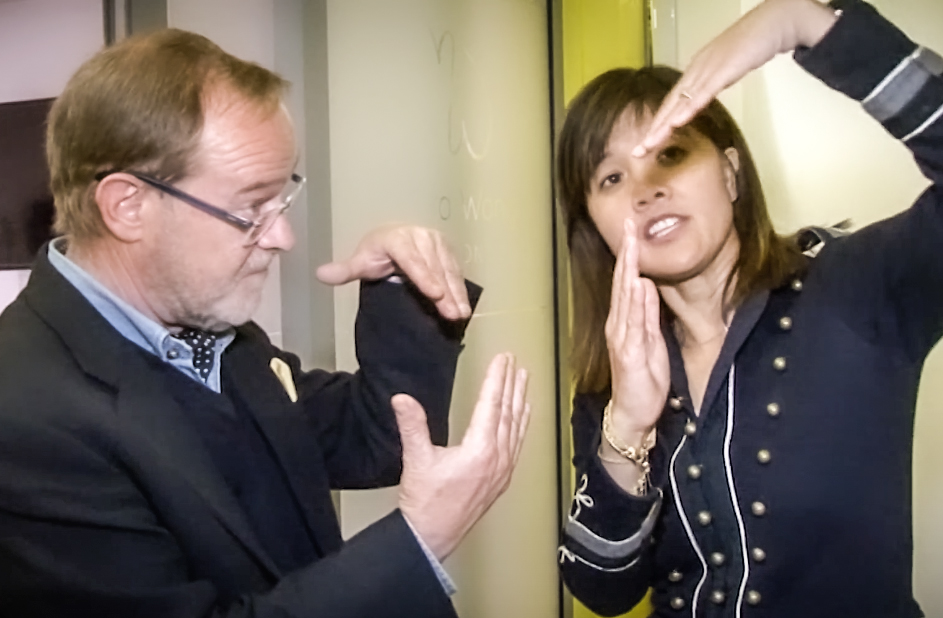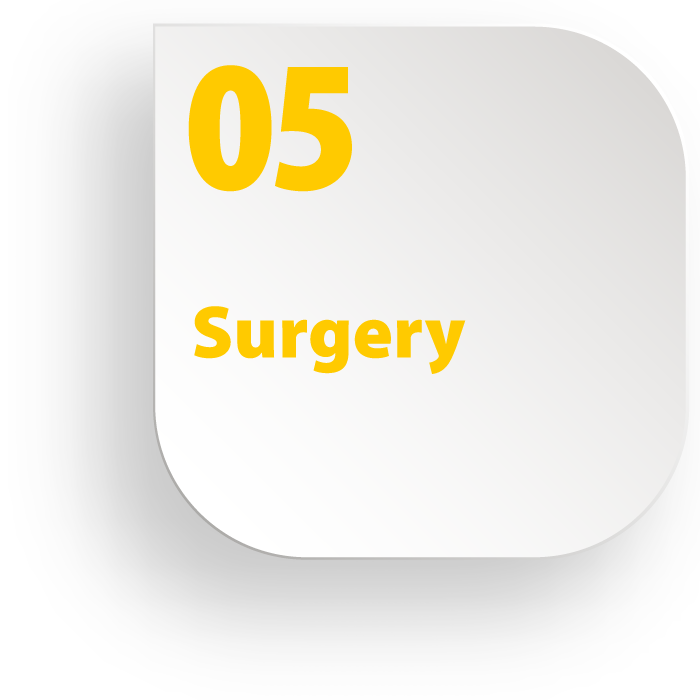
Jaw Surgery
Delivering predictably good results to change the lives of patients requiring complex treatment.
The Treatment
If you have a lower jaw that is too long or too short, it results in the upper teeth sticking out a long way or the lower teeth in front of the upper teeth as an underbite. The jaw may grow longer on one side than the other, and this can cause facial asymmetry. If you notice anything like this, you should seek help from a specialist who is experienced in working with these types of jaw discrepancies.
Thankfully, an expert orthodontist, Dr Moira Wong, is here to explain everything you need to know about orthognathic surgery to correct the jaw, which normalises the face to give patients a new feeling of confidence.
The orthognathic surgery corrects the conditions of the jaw and the face related to structure, growth, problems with skeletal disharmonies, temporomandibular joint (TMJ) disorders, or other orthodontic problems that cannot be easily treated with braces.
It is also used in the treatment of congenital conditions like cleft palate. Orthognathic surgery is commonly referred to as corrective jaw surgery.
Orthognathic Surgery can contribute to the correction of multiple orofacial functions such as occlusion, nasal breathing, facial expression and smiling, snoring, and sleep apnea.
Problems of jaw alignment can cause long-lasting discomfort, making mealtimes a trial and all too often resulting in a compromised quality of life. Moira Wong Orthodontics is dedicated to providing the best possible jaw surgery, helping people overcome these difficulties, sometimes through a combination of orthodontics and surgery.

When do signs of misalignment of jaws and teeth start to show?
As it is something that changes over time, a lot of parents notice facial asymmetry or an underbite in their children, and it is good for them to be seen early to monitor growth and development. We usually try to enhance jaw growth if patients are young. If they are not growing or growing too quickly, it is good to get records at key stages. This information helps to fine-tune the timing of surgery. It is different in different people and of course different in girls and boys.

How do the orthodontist and oral and maxillofacial surgeon work together?
Dr Wong’s specialist training included a two-and-a-half-year period primarily dedicated to managing complicated adult cases. She understands how best to combine surgical and orthodontic treatments. Mr Piet Haers, one of the UK’s leading orthognathic surgeons, provides services to the practice. They work together as a team. The orthodontist first puts the teeth in a position so that when the jaws are corrected surgically, everything fits together. The stability of the surgery is determined by the teeth fitting together and holding the new jaw position.

How is orthognathic surgery performed?
Orthognathic surgery is performed with the patient asleep, and it usually involves a one night stay in the hospital for single jaw surgery and two nights for double jaw surgery. Typically, with our patients, we have a high success rate with minor swelling due to our surgeon’s expertise. Mr Piet is very experienced, and he and Moira have been working as a team since 1998.

What is the recovery period like after orthognathic surgery, and what aftercare is involved?
The appointments are usually once every five weeks from the beginning of the treatment. Once the patient has had the surgery, we typically start seeing them every week for about four weeks to monitor and influence the healing and the final position of the teeth and jaws. The patient is on a soft diet for a week, eating foods such as pasta and omelette, and then, gradually, they are back to eating normally within two to three weeks.
The Process


Consultation with orthodontist
We will first see you for a consultation. At your first appointment, your specialist orthodontist will carry out a complete examination of your teeth, gums, and bone structure. We will take photos and X-rays, and conduct a comprehensive assessment. The orthodontist will also discuss the treatment specifics, complexity, and commitment.

Consultation with surgeon
After your consultation with the expert orthodontist, a report including all the information collected during the first appointment is forwarded to the surgeon. You will then have a consultation with the oral surgeon, who will take you through the details of the orthognathic surgery and make sure you understand the procedure.

Discussion of commitment
Before you make the final decision regarding this treatment, you will have one more consultation with your specialist orthodontist and the surgeon to discuss the level of commitment and gauge your readiness to take on that life-changing journey.
At Moira Wong Orthodontics we offer patients who are interested in jaw surgery an additional benefit!
If you would like to discuss the procedure with a person who has already been through it, we’ll put you in touch with one or more of our previous patients and you can arrange to talk over the phone or meet in person, so you can ask any questions that come to mind from someone who’s been where you are.

Initial orthodontic treatment
Once you begin the treatment the first phase would take between 9 and 12 months, during which time your teeth are moved with braces to position them properly so the surgery can take place. You will see your orthodontist approximately every 5 weeks for adjustments. During the last 3 months of this initial treatment, your orthodontist will begin collecting impressions of your teeth and start creating sample models of your teeth. Copies of these models are sent to your surgeon as well. The team of specialists uses the models to perform the surgery virtually and see how things are coming along.

Surgery
When your teeth are in their optimal position the surgery will take place. Until then your surgeon and your orthodontist will have performed your surgery on the models of your teeth a number of times and have predicted every move they need to make during the actual surgery to cater for the quickest and safest possible procedure. During the surgery, you will be fully asleep and will spend a day or two, depending on the type of surgery you have, in a hospital. Right after the surgery (for about a month) you will have weekly appointments with either your surgeon or your orthodontist who will monitor the healing and the final position of the teeth and jaws.

After Surgery and Fine Tuning
Post-operative care is as important as the surgery itself! After orthognathic surgery, we often start patients on an all-liquid diet. Over time, soft food is introduced, and then hard food and a normal diet when we are satisfied that the patient is ready for it. Diet is very important after the surgery to accelerate the healing process.
When you’re ready braces are used for another 6 to 12 months to fine-tune your tooth positioning and achieve the best possible results.

Retention Period
At the end of your treatment, when your teeth and your bite have been appropriately adjusted, we will remove your braces. To ensure the retention of the achieved results and avoid relapse, we will place a fixed retainer. The fixed retainer is a thin wire bonded to the back of the upper and lower front teeth. It keeps them together and prevents them from moving, and you’ll never know it’s there!
We will also provide you with a set of removable retainers for you to wear overnight. The removable retainers are clear thin aligners that go over your teeth. They will help ensure your teeth are protected from moving and prevent you from grinding and applying forces that might affect the achieved results.
Finally, we will see you for regular appointments approximately every three months during the first year post your orthodontic treatment. These appointments aim to closely monitor how your teeth behave post-treatment and react promptly if there are any changes.
Double Jaw Surgery
Patient and Orthodontist, sharing the story of a double jaw orthognatic surgery treatment.
Your doctors

Dr Moira Wong
Founder & Specialist Orthodontist
The founder of the clinic, Dr Moira Wong, is our wonder-woman. With tons of experience and an awe-inspiring academic track record, she is beloved by all of her patients.

Mr Piet Haers
Orthognathic Surgeon
One of the UK’s leading orthognathic surgeons, Mr Piet is reliable, knowledgeable, and always honest with his patients.
Have a question? Ask us:
Book an Appointment
You can book an appointment online, or by giving us a call on 020 7368 6611.
